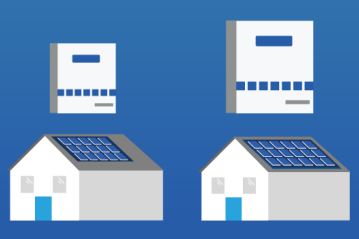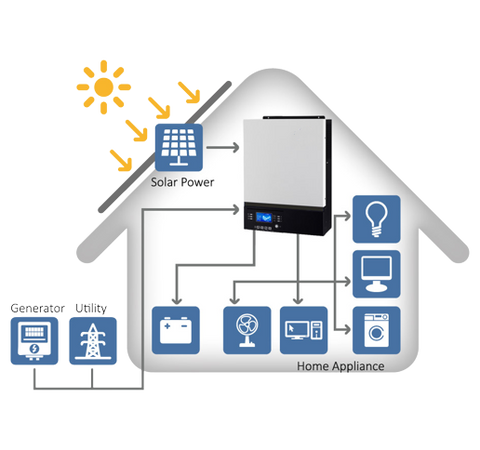
A solar inverter is an essential component of any solar power system as it converts the DC electricity generated by the solar panels into alternating current (AC) electricity that can be used in homes and businesses. In this blog post, we will discuss the main types of solar inverters and the differences between off-grid and on-grid inverters.
1. What are the Main Types of Solar Inverter?
There are three main types of solar inverters: micro inverters, off-grid inverters, and on-grid inverters.
(1) Micro Inverters
Micro inverters are small inverters that are attached to each individual solar panel. Instead of having a single inverter for the entire solar system, micro inverters are used to convert the DC electricity generated by each panel into AC electricity.
This means that each panel produces its own AC electricity, which is then combined and sent to the electrical grid. Micro inverters are popular because they are highly efficient and allow for easy monitoring of individual panel performance.
(2) Off-Grid Inverters
Off-grid inverters are used in standalone solar power systems that are not connected to the electrical grid. These systems are typically used in remote locations where there is no access to the grid, or in areas where the cost of connecting to the grid is prohibitively expensive.
Off-grid inverters convert the DC electricity generated by the solar panels into AC electricity that can be used to power appliances and equipment in the home or business. These systems also require batteries to store excess energy generated by the solar panels for use when the sun is not shining.
(3) On-grid Inverters
On-grid inverters, also known as grid-tied inverters, are used in solar power systems that are connected to the electrical grid. These systems are designed to feed excess energy generated by the solar panels back into the grid, which can then be used by other homes and businesses. On-grid inverters are highly efficient and can be used to offset electricity bills by selling excess energy back to the grid.
2. What’s the differences between Off-Grid Inverters and On-Grid Inverters?
The main difference between off-grid and on-grid inverters is their purpose.

Off-grid inverters are designed to be used in standalone solar power systems that are not connected to the electrical grid, while on-grid inverters are used in solar power systems that are connected to the grid. Off-grid inverters require batteries to store excess energy generated by the solar panels, while on-grid inverters do not require batteries as excess energy is fed back into the grid.
Another difference is the level of complexity of the system.
Off-grid solar power systems require more components and are generally more complex than on-grid systems. Off-grid systems require batteries, charge controllers, and other components to store and manage energy, while on-grid systems only require the solar panels and on-grid inverters.
Finally, the cost of an off-grid system is generally higher than that of an on-grid system.
Off-grid systems require more components and batteries, which can make them more expensive to install and maintain. On-grid systems, on the other hand, do not require batteries and can be more cost-effective in the long run as excess energy can be sold back to the grid.
3. Conclusion
In conclusion, The main differences between off-grid and on-grid inverters are their purpose, complexity, and cost. Off-grid inverters are used in standalone solar power systems that are not connected to the electrical grid and require batteries to store excess energy. On-grid inverters are used in solar power systems that are connected to the grid and do not require batteries as excess energy is fed back into the grid.



0 comments